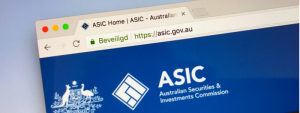Now that the 2024 Fringe Benefits Tax (FBT) year has concluded, employers should review FBT regulations as part of their tax management strategy. Recent significant changes to car parking fringe benefits rules make this especially important. We highlight crucial technical aspects for employers to consider, along with relevant economic factors for this FBT period. Additionally, the Australian Taxation Office (ATO) has revised its car parking guidelines in the FBT employer handbook.
Car Parking Fringe Benefits
Are You Offering Car Parking as an Employee Benefit?
Employers offering any form of car parking to employees might incur fringe benefits tax. To qualify as a car parking fringe benefit, all these criteria must be satisfied on any given day:
- An employee’s vehicle is parked in a location that:
- You own/lease/control
- Is near an employee’s main workplace
- Is within 1km of commercial parking charging >$10.40/day
- Car parked >4 hours total between 7am-7pm
- Employee uses their car for homework commute that day
- Your business isn’t eligible for the limited small business exemption
When car parking fringe benefits are provided, employers must:
- Calculate the value of the parking space
- Determine the number of benefits provided yearly
For benefit count, choose from:
- Statutory formula method
- 12-week register method
- ‘Actual’ method
For daily rate calculation, options include:
- Commercial parking station method
- Market value method
- Average cost method
Exemptions are limited to:
- Small businesses qualifying for FBT concessions
- FBT-exempt employers
- Employees with disability parking permits
- Occasional parking (may fall under minor benefits exemption)
The effects of TR 2021/2
Taxation Ruling 2021/2 Fringe Benefits Tax: Car Parking Benefits (TR 2021/2), which went into effect on 16 June 2021, and applies to car parking fringe benefits granted starting on 1 April 2022, is now something that employers need to be aware of.
Extension of business parking structures
The ATO has expanded its definition of ‘commercial car parking facilities’ to include those charging under a penalty-rate system – i.e. discounts towards shorter stays vs full day usage. This would include shopping centres, hotels, airports, universities, and hospitals. This expands the scope of ‘special purpose car parks’ and may give rise to extra FBT liability.
Explanation of “in the vicinity of” and “primary place of employment” for employees
Following the Full Federal Court decision in FCT v. Qantas Airways Ltd [2014] FCAFC 168, TR 2021/2 also outlined the Commissioner of Taxation’s opinion on what constituted a parking lot being “in the vicinity of” an employee’s “primary place of employment.”
From these rulings, employers should take heed of the following:
- Regarding “in the vicinity of,” physical constraints that make it difficult for workers to commute (such as a freeway or airport) may cause a parking lot to no longer be “in the vicinity of” their principal place of employment; and
- The term “primary place of employment” is determined based on the specific workday. The ruling now clarifies that if an employee leaves their home base to perform duties elsewhere, such as at an airport, that home base is still considered their primary place of employment for that particular day.
Additional factors to consider for Car Parking FBT compliance
- Ensure the lowest price charged is available to the general public. The ATO is reviewing what qualifies as the “lowest fee charged to members of the public,” particularly for special purpose car parks with varying rates based on the type of “parker”. The more specific or restrictive the category of parker, the less likely the ATO will consider that rate as being available to the public.
- Car parking charges have increased recently, especially in Sydney and Melbourne, due to the end of concessional pricing and inflation. This could lead to new car parking liabilities if nearby rates exceed $10.40 for the 2024 FBT year. Additionally, if prices rise significantly later, a market valuation might be better than average rates for assessing fringe benefits. Employers should monitor fee changes to manage potential liabilities.
- Remote work due to COVID-19 has decreased car travel and the use of employer-provided parking. The statutory formula method assumes 228 parking days per year, which may not suit flexible work arrangements. Employers should use the “actual” method to avoid overpaying FBT for frequent remote work. If full-year data isn’t available, a 12-week register method can help estimate parking benefits more accurately.
- Improved data from car parking operators, like boom gate or swipe card records, allows employers to accurately track parking usage and use the “actual method” for calculating car parking liability. This ensures FBT is only paid for fully utilised spaces and helps adjust the number of parking spaces, especially with more remote work. The “actual method” can reduce unnecessary FBT costs for underused spaces.
- If full-year car parking data isn’t available, employers can use the 12-week register method. This involves tracking parking benefits over a continuous 12-week period to estimate benefits for the 2024 FBT year and the next four years, unless parking spaces or employees increase by over 10%. This method is useful for employers with partial data and consistent parking use.
- Employers can use either the average cost method or the market value method to determine car parking space value. While the market value method is more costly and involves detailed record-keeping, it may be more beneficial in 2024, especially if penalty-rate operators are nearby. Most employers typically prefer the average cost method.
- The ATO stresses the importance of record-keeping. Employers must ensure they have records to verify if a commercial parking station is within a mile of their work parking lot. To prepare for your 2024 FBT return, review your parking arrangements and choose a calculation method to manage FBT liability effectively.
Advice
When evaluating your vehicle parking arrangements for the current FBT year, we highly advise you to take the following into consideration if you offer your employees car parking fringe benefits:
- Maintain a record of every location where you conduct business, along with any spots or arrangements for vehicle parking there.
- In addition to the aforementioned, research the commercial parking lots that are close to each place where you offer parking, paying special attention to the possibility of penalty-rate parking lots that were previously not eligible for FBT.
- Make sure a significant portion of the public can access the rates you want to use, and keep an eye out for any additional ATO guidance on this front.
- Examine the effects of any flexible work schedules at any of your employment locations and decide if using a different method—such as the 12-week register method—would be a better way to determine the amount of benefits offered throughout the year.
- Examine the public rates that surrounding parking operators charge in relation to the parking benefits you offer. In particular, see if there have been any justifiable increases that would call for possibly using a different method to determine the taxable value per day.
- Review whether your company has undergone any changes at all. These could include office renovations, new business acquisitions (especially those that were formerly small enterprises), or any combination of these that may have affected your benefits for parking.
- Maintain open lines of contact with your parking operator to find out if they retain parking data that you can utilise to determine the taxable amount of your parking fringe benefit.
Do not hesitate to contact our tax accounting experts, if you need help with managing your company’s FBT or employment taxes in general.
Was this article helpful?
Related Posts
- Mastering Your Fringe Benefits Tax (FBT) for 2023
It’s important for businesses with employees to carefully review any fringe benefits they have provided…
- Fringe Benefits Tax (FBT): What it is and how to manage it?
Providing perks or benefits are possibly the best way to reward and acknowledge the contributions…
- Strategies for Simplifying End-of-Financial-Year for Small Businesses
As the financial year-end approaches, the task of reconciling records and examining expenses can be…
- ESIC: A Tax Guide for Founders
At Fullstack we work with hundreds of founders working through obtaining the ESIC incentive for…
















